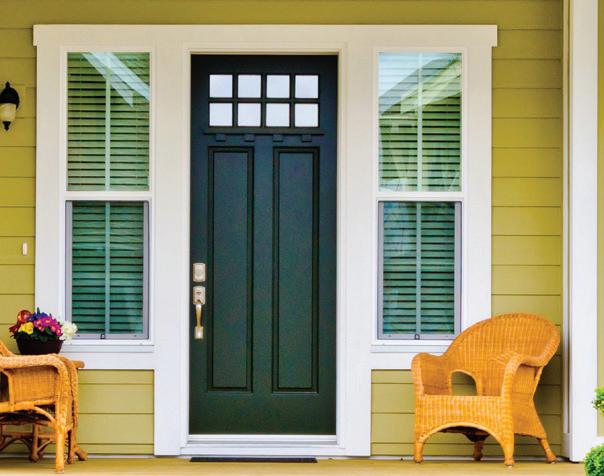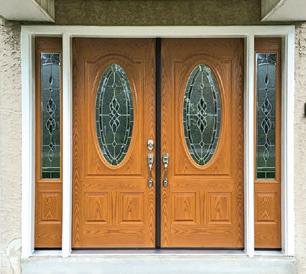
2 minute read
Energy Efficiency and Doors
by Expert Contributor Paul Barrett, Owner of PB Contracting Company, LLC
Nowadays, everything has an energy rating, and doors are no exception. Newer exterior doors are much better insulated than the older types. If your home still has older doors, replacing them might be a good investment. Energyefficient doors allow you to save money on your energy bills and maintain a consistent temperature inside your home year-round. One main factor in door energy efficiency is the material the door is made of.
Fiberglass
Fiberglass doors are among the strongest on the market, in addition to being the most energy efficient. Fiberglass is a poor conductor of heat, and when insulated and installed properly, it is easily the most energy-efficient type of exterior door available.
Steel
Steel doors are somewhat energy efficient, however they do conduct heat, which means you can feel the cold or the heat by just touching the door. They do still carry an efficiency rating, but it’s just not as durable and efficient as fiberglass. Steel doors are also very easily dinged and dented.

Wood
Wood doors have a vintage, classic beauty about them, but they are the least energy-efficient choice. Wood has poor insulation and absorbs weather elements much more easily than other materials. Wood allows outside temperatures inside your home with ease.
Door weatherstripping is another huge factor in energy efficiency. Unlike older doors, newer pre-hung doors typically come with new energy-efficient weatherstripping. There are multiple different types of weatherstripping such as aluminum, rubber, foam, magnetic and silicone, just to name a few. The best choice typically depends on what your current door is made of. Local hardware or home improvement stores typically sell numerous selections to provide extra protection for your door.

Energy efficiency is just as important with large glass areas. Check whether your door glass is double- or tripled-paned glass and has a Low-E rating to ensure the maximum efficiency. A fiberglass door with a low-rated glass can greatly reduce its efficiency rating.
Installation quality of your entry door also provides key aspects for the greatest efficiency level. Spray foam insulation is one of the most effective ways to seal every space to stop weather elements. A door that’s not installed level and square could have multiple issues including a proper seal to deter airflow from entering. In addition, it can affect the functionality and operation of the door, which can reduce the tightness of the weatherstrip seal.
Proper caulking is also a great way to help seal spaces and reduce airflow. Be sure to seal the sill/threshold to maximize the stop of airflow. This is an area that often gets missed during installation but is crucial to seal.
Open your door to friends and family but keep mother nature out!

Expert Contributor Paul Barrett, Owner of PB Contracting Company, LLC
PB Contracting Company, LLC
Delaware County’s Expert Door Installer
• Interior Pre-hung & Slab Door Installation • Transom/Sidelight Installation (with Entry) • Entry & Patio Door Installation • Storm & Security Door Installation • Door Capping and Repair Services • Door Lock Installation
484-466-3221
• 15 Years Experience • Competitive Pricing • Fully Licensed & Insured










